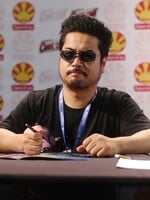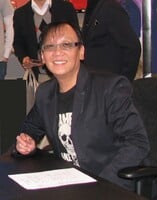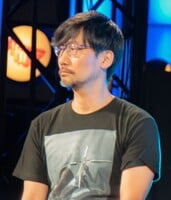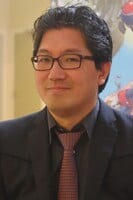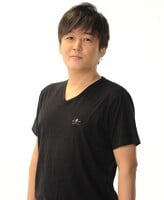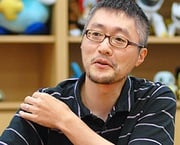| Welcome to SmashWiki! Log in or create an account and join the community, and don't forget to read this first! |
| Notices |
|---|
| The Skill parameter has been removed from Smasher infoboxes, and in its place are the new "Best historical ranking" and "Best tournament result" parameters. SmashWiki needs help adding these new parameters to Smasher infoboxes, refer to the guidelines here for what should be included in these new parameters. |
| When adding results to Smasher pages, include each tournament's entrant number in addition to the player's placement, and use the {{Trn}} template with the matching game specified. Please also fix old results on Smasher pages that do not abide to this standard. Refer to our Smasher article guidelines to see how results tables should be formatted. |
| Check out our project page for ongoing projects that SmashWiki needs help with. |
List of developers significant to Super Smash Bros.
The following list describes developers that have had a major impact on the development of Super Smash Bros. or one of its major franchises.
Toby Fox[edit]
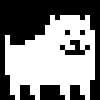
Robert F. Fox, born October 11, 1991, known professionally as Toby Fox, is an American video game developer and video game composer. He is known for developing the role-playing video games Undertale in 2015, and Deltarune in 2018, for which the former garnered acclaim and he received numerous nominations. He is also responsible for giving Masahiro Sakurai contact info of 8-4, a localization company known for translating the aforementioned games, for translating in English the YouTube channel Masahiro Sakurai on Creating Games.[1] Additionally, Fox has participated in a few competitions for Super Smash Bros. Melee, with "Radiation" as his tag name.[2]
The success of Undertale, especially in Japan, afforded Fox the opportunity to visit Masahiro Sakurai at his home, where they discussed the series and played Super Smash Bros. Ultimate against each other. It is also explained during the Mr. Sakurai Presents "Banjo & Kazooie" video. Sans, a character from Undertale, was later included in Ultimate as a Mii costume available through downloadable content, along with his instrumental composition "MEGALOVANIA", for which Fox provided a new arrangement.
Katsuhiro Harada[edit]
Katsuhiro Harada (原田 勝弘), born June 10, 1970, is a Japanese game director and producer for Bandai Namco. He is best known for his work with the 3D fighting game series Tekken, starting as a voice actor then director since Tekken 3. Besides his works, he also owns a YouTube channel, Harada's Bar, where he discusses about any topics with anyone, such as video game directors and producers, in which Masahiro Sakurai participated in a special episode, and fans.
Harada co-worked with Masahiro Sakurai on adding Kazuya Mishima in Super Smash Bros. Ultimate.[3]
Yuji Horii[edit]
Yuji Horii (堀井 雄二), born January 6, 1954, is a Japanese video game designer and scenario writer best known as the creator of the Dragon Quest series of role-playing games, supervising and writing the scenario for Chrono Trigger, as well as the first visual novel adventure game Portopia Serial Murder Case. He is also the founder of Armor Project, a company contracted under Square Enix that serves as a owning of the Dragon Quest intellectual property, which also appears for crossovers with this series like in Ryu Ga Gotoku Studio's Yakuza: Like a Dragon or the Super Smash Bros. series. As of 2024, Horii is the last of the remaining original members who created the Dragon Quest series, as Koichi Sugiyama and Akira Toriyama passed away during the 2020's, and Spike Chunsoft, then Chunsoft and included Koichi Nakamura, left development of the series in 1992.
While there were restrictions in the past over having past heroes interact and fight with each other, it has become less strict over time since the release of Dragon Quest Rivals for smartphones. Knowing the popularity of the Super Smash Bros. series, he personally wanted the Hero to join the series, and as such requested Masahiro Sakurai and the team to add the Dragon Quest franchise in Super Smash Bros. Ultimate. Sakurai's initial proposal had only included the Heroes of Dragon Quest III and Dragon Quest XI; XI's being the default due to being the latest installment and to promote its then upcoming Nintendo Switch port, and III's due to being the most iconic Hero of the series. However, Horii allowed more to be included, and as a result, the Heroes of Dragon Quest IV and Dragon Quest VIII were added in the game along with the two prior Heroes—the idea of including other Heroes beyond those four was considered, but ultimately turned down due to time constraints.[4]
Hideo Kojima[edit]
Hideo Kojima (小島 秀夫), born August 24, 1963, is a video game designer formerly employed by Konami, and the creator of the Metal Gear series. His involvement was instrumental in bringing Solid Snake to Super Smash Bros. Brawl, along with participating in the game's development.
Initially interested in entering the film industry, he would use video games as a stepping stone to get noticed as a writer. He frequently lied about his confession because most people would look down on him for being in the video game industry. Also, there was no formal phrase for "game developer" in the Japanese language at the time, so it was easier to say he was part of a financial firm. To make this façade seem more credible, he decided to join a company on the public stock exchange, and the only publicly traded video game company at the time was Konami, so he applied there. He ended up joining the company in 1986 with the MSX and personal computer division. Kojima really wanted to be in the home console division, as he believed the hardware of the MSX was too restrictive. Nevertheless, he ended up being assistant director for Penguin Adventure before taking over a title called Metal Gear as creative director. Due to hardware limitations making combat difficult to implement, the direction was changed to be more focused on stealth.
Metal Gear became a critical and financial success. While Kojima only planned for that one game, an NES port and sequel to that port were made without his involvement. He notoriously criticized those games and returned with a canonical sequel to right the series back on track. Metal Gear eventually became a long-running franchise and Kojima's main claim to fame. Other projects he was involved in include the film-noir inspired graphic adventure game Snatcher and the science fiction graphic adventure game Policenauts, as well as producing the Zone of the Enders and Boktai series, and Castlevania: Lords of Shadow. Kojima would also found a subsidiary within Konami called Kojima Productions, which existed to develop the Metal Gear franchise and other miscellaneous projects; notably P.T., directed with Guillermo del Toro. The latter would be cancelled after Kojima left Konami in 2015.
Kojima and his company would continue to work on new games after the departure. One such was Death Stranding, released in 2019 and its Director's Cut later in 2021, and with the help of Sony Interactive Entertainment. The game receive massive success throughout the COVID-19 period, which led to create the "strand game" genre and become a franchise with a sequel and a movie adaptation in production. During gamescom 2022 on August 22, 2022, Kojima announced the launch of a Spotify podcast channel named Brain Structure for September 8. It is a list of episodes of him talking about his experiences on creative process, featuring other famous persons from any industry such as Geoff Keighley and Jordan Peele. These specific connections would grow into collaborating on OD, that will be published by Xbox Game Studios, and announced at The Game Awards 2023.
According to Masahiro Sakurai, Kojima "practically begged" him to include Snake in Super Smash Bros. Melee, but at that point the game was too far in development to allow adding any additional characters.[5]
When work on Super Smash Bros. Brawl began several years later, Sakurai contacted Kojima about adding Snake, which led to his inclusion in the game. Kojima developed Snake's stage, Shadow Moses Island.[6][7] After losing a test match of Brawl against Sakurai, where he played as Snake and Sakurai played as Mario, he stated that he felt the game was "very complete" to the point that Nintendo could have put Brawl out on the shelves then and it would sell millions of copies. When asked about the inclusion of Snake in Brawl, Kojima remarked that he enjoys playing Super Smash Bros. with his son, who asked Kojima to put Snake in Brawl. Kojima also cited the lack of Metal Gear games on Nintendo consoles as a reason to include Snake in Brawl.[8]
During an interview with Geoff Keighley for Twitch on March 2014, Kojima was asked about the possibility of Snake reappearing in Super Smash Bros. 4, to which Kojima replied that he had no input on the game and felt Snake's return was unlikely, although he was supportive of Snake returning.[9] Upon the release of Super Smash Bros. 4, it was confirmed that Snake does not make an appearance in the game, and indeed all elements of the Metal Gear universe from Brawl do not return. In late 2015, Kojima left Konami amidst rumors of disagreements with the company's management, and in December of that year reestablished himself as the head of the now independent Kojima Productions studio.
In June 2018, with the formal announcement of Super Smash Bros. Ultimate, it was revealed that Snake would again appear in the Smash roster. His series symbol, formerly the logo of Metal Gear's FOX Unit, was changed to an exclamation point, likely because the FOX logo was also the logo of Kojima Productions while Kojima worked for Konami. Kojima has not publicly commented on Snake's return in Ultimate. Additionally, content from his company other than Metal Gear were featured in Ultimate, like a spirit from Castlevania: Lords of Shadow for the Castlevania franchise.
Yuji Naka[edit]
Yuji Naka (中 裕司), born September 17, 1965, was a Japanese video game programmer, designer, and producer. He is the former head of the Sega studio Sonic Team, where he was the lead programmer of the original Sonic the Hedgehog series on the Sega Mega Drive, or Sega Genesis in PAL region.
Naka also led development on games other than the Sonic franchise, including Nights into Dreams, Burning Rangers, and contributed to the Phantasy Star franchise. In 2006, he left Sega to found Prope, an independent game company that published games like Shot2048 in 2021. Naka also worked under Square Enix to direct Balan Wonderworld, only to leave the company before the game's release due to issues with both this company, and Arzest.[10] He was arrested by the Tokyo District Public Prosecutors Office on November 18, 2022 along with two other employees of Square Enix, after purchasing 2.8 million yen in Aiming shares before Dragon Quest Tact got announced in public, then a second time on December 7, 2022, having purchased 144.7 million yen in ATeam shares before Final Fantasy VII: The First Soldier got announced in public.[11][12] As a result, he was sent to prison for over two years on July 7, 2023.[13]
Like Hideo Kojima with the Metal Gear series, Naka requested Masahiro Sakurai to include Sonic in Super Smash Bros. Melee, but at that point the game was too far in development to allow adding any additional characters.[14]
When work on Super Smash Bros. Brawl began several years later, Sakurai and the team managed to add Sonic, along with the franchise, in the titular game. Since then, the franchise remained in the Super Smash Bros. series as of 2018's Super Smash Bros. Ultimate.
Additionally, content from his company were featured in the series, with Iris Archwell and the Demon King Arzodius from Monster Manor in Smash for 3DS, and spirits in Ultimate, along with Coraline from Ultimate Angler, Shinobu from Ninja Launcher, and Crispin from Feed Mii.
Tetsuya Nomura[edit]
Tetsuya Nomura (野村哲也), born October 8, 1970, is a Japanese video game artist, designer, and director working for Square Enix, formerly SquareSoft. He designed characters for the Final Fantasy series, debuting with Final Fantasy VI and continuing with various later installments. Additionally, Nomura has led the development of the Kingdom Hearts series since its inception in 2002 and was the director of the 2005 film Final Fantasy VII: Advent Children.
Nomura participated in the inclusion of Cloud Strife in Super Smash Bros. 4's DLC with his moveset and character design. The latter was inspired of Cloud's appearance in Dissidia Final Fantasy.[15] He has later illustrated Cloud's challenger illustration for Smash 4.
Nomura has contributed in Super Smash Bros. Ultimate's countdown, as he posted an illustration on the seventh day before its release. Furthermore, many characters from his works were featured in Ultimate. This includes Sephiroth as a playable character along with many characters from Final Fantasy VII as spirits in December 2020, Jin and Malos from Xenoblade Chronicles 2 appearing as spirits in March 2021, and Sora as a playable character along with original characters from the Kingdom Hearts series as spirits in October 2021. Nomura was also responsible for the inclusion of Sephiroth and Sora in Ultimate, from being hesitant on adding Sephiroth and the Kingdom Hearts franchise in the game, even after Disney's agreement for the latter,[16] to the handshake between Sora and Mario at the end of his reveal trailer, "The Last Key".[17]
Ken Sugimori[edit]
Ken Sugimori (杉森 建), born January 27, 1966, is a graphic artist from Japan who is the art director of the Pokémon games. Sugimori designed the first 151 Pokémon virtually by himself, and since Pokémon Ruby and Sapphire Version, he has been part of a character design team. His other work for the series includes the design for the human characters such as Gym Leaders, as well as the first and second Generation of Pokémon trading cards. Sugimori's art pieces of each Pokémon are commonly used for generic images of each character on forums and websites. Sugimori is a close friend of Satoshi Tajiri, the creator of Pokémon, and co-founded Game Freak with him.
Sugimori has helped on the art direction for the Pokémon of the Super Smash Bros. series. Sugimori has also illustrated Greninja's challenger illustration for Super Smash Bros. 4.
References[edit]
- ^ Tracker on Twitter. Twitter (October 1, 2022). Retrieved on October 1, 2022.
- ^ A set of Toby Fox playing melee. His tag is Radiation.. Reddit (September 5, 2019).
- ^ Kat Bailey (September 15, 2022). Harada Praises Sakurai: Probably the Only One Who Could Properly Make Smash Bros.. IGN. Retrieved on January 7, 2024.
- ^ Alistair Wong (September 26, 2019). Masahiro Sakurai And Yuji Horii Discuss Smash Ultimate’s Hero DLC, Director Philosophy, And More. SiliconEra.
- ^ E306 Super Smash Bros. Brawl Q&A. Kotaku (May 11, 2007). Retrieved on January 7, 2024.
- ^ James Ransom-Wiley (July 31, 2006). Kojima to design Snake's Smash Bros. Brawl stage. Engadget. Retrieved on January 7, 2024. “Chris Hoffman recently commented, "If you want to talk about something big, how about the news Hideo Kojima, Snake's creator, is designing Snake's level in Brawl? Snake's inclusion means we're not only getting one of the best characters in gaming, but one of the best developers as well."”
- ^ ebradford (July 28, 2006). Hideo Kojima to create Snake's Super Smash Bros. Brawl stage?. DSmeet. Archived from the original on August 6, 2007. Retrieved on January 7, 2024.
- ^ Ryan Payton (April 26, 2007). The KP Report Session 037. RYAN's BLOG (KojiPro). Archived from the original on April 29, 2007. Retrieved on April 1, 2024.
- ^ Tecnhophilz (March 13, 2014). Hideo Kojima Twitch Interview - London 13/03/2014. YouTube. Retrieved on April 6, 2024.
- ^ Parrish, Ash; Sato, Mia (April 28, 2022). Yuji Naka says Square Enix doesn’t ‘value games’ after Balan Wonderworld mess. The Verge. Retrieved on May 3, 2022.
- ^ Romano, Sal (November 18, 2022). Yuji Naka arrested in Dragon Quest Tact insider trading scandal. Gematsu. Retrieved on November 18, 2022.
- ^ Former Sonic boss Yuji Naka re-arrested, as fresh insider trading allegations emerge. Eurogamer.net (December 7, 2022).
- ^ ゲームクリエイターに有罪 インサイダー取引 東京地裁(時事通信) (ja). Yahoo! (July 7, 2023). Archived from the original on July 7, 2023. Retrieved on December 30, 2023.
- ^ Yuji Naka on the road - Edge Magazine
- ^ Soma (January 20, 2016). Sakurai x Nomura: Creator Interview 2016 [Part One]. Retrieved on April 18, 2022.
- ^ Kimberley Wallace (June 14, 2022). Nomura Reveals More On Kingdom Hearts IV And The Series' Future With Final Fantasy. Retrieved on June 14, 2022.
- ^ Jason Fanelli (November 10, 2021). From Splatoon To Sora: The Life And Times Of Super Smash Bros. Ultimate. Retrieved on August 13, 2022.
| hide Important persons involved in the Super Smash Bros. series | |
|---|---|
| Key | Satoru Iwata · Masahiro Sakurai |
| Significant | Reggie Fils-Aimé · Shigesato Itoi · Shigeru Miyamoto · List of developers significant to Super Smash Bros. |



